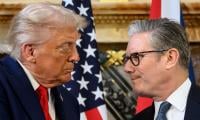Business-consumer confidence
Before we review the economic data, let us examine public perceptions. On Monday, January 27, 2020, Gilani Foundation/Gallup released a business confidence survey taken at the close of 2019.
According to the survey, 3 in 5 respondents (60 percent) say they are pessimistic about the direction of the country, but more are hopeful (43 percent) that the coming year will be better for their business. However, remaining respondents said the conditions would either remain the same or worsen. With respect to issues affecting business which government should tackle, 22 percent said inflation, 19 percent said taxes, 11 percent said import-exports and the rest said other issues.
The French polling agency, Ipsos, has also released its consumer confidence survey in mid-January. In almost all questions relating to reduced purchasing power, job security, knowledge of someone having lost the job, satisfaction with state of things, the extent of worsening economy, the correctness of future direction and optimism about personal well-being were all answered negatively by a significant majority.
Finally, the IBA/SBP Survey has three components: expected economic conditions; current economic conditions and consumer confidence index. Between November and January, there was only a slight improvement in the perception regarding economic conditions but in the other two indices perceptions were worsened.
The survey results are decisively pointing to a state of widespread disaffection with the current state of the economy. Let us review some of the recent economic data and developments to assess the direction of the economy.
The monetary policy committee (MPC) in its latest meeting has decided to keep the interest rate at the current level of 13.25 percent. This is clearly a reflection of its assessment that continuing a tight monetary policy is required to maintain economic stability.
The most significant news is related to the FBR. Two developments would further mire the economic situation. First, the chairman of the FBR has reportedly gone on an indefinite leave. Chances are that he will not return to the job. His departure has not just left the FBR’s ship without a captain, it also signals turbulent waters lying ahead of the voyage. Some reports have suggested that his departure reflects an underlying rift in the economic team. If true, it would mean that a team that looked solid and formidable in May 2019 is facing a rupture. It is ominous just a day before the Fund Mission starts the Second Review under the programme.
Second, despite a small improvement in the rate of collection, the gap between actual and target revenues collections continues to widen. The shortfall has increased to Rs387 billion (close to one percent of GDP). Even assuming a growth rate of 17 percent, henceforth for the next five months, the total collection would be around Rs4466 billion, which would be short by Rs772 billion relative to the revised target of Rs5238 (as opposed to the original budget target of Rs5550, which would mean a shortfall of Rs1084 billion). This shortfall will increase the fiscal deficit. Reportedly, a mini-budget is under preparation, though the government is devoid of any political capital to levy more taxes after imposing the highest ever taxes in the last budget.
On the other hand, the inflation picture is fairly scary. The headline inflation during the current government rose moderately during August ’18 to March ’19 from 6.2 percent to 8.6 percent and then slowed to 8.0 percent in June ’19. From July ’19, it has accelerated and reached 14.6 percent in January. It is primarily food inflation that has caused this run-away inflation, which is highest in a decade.
In January, food inflation stood at 19.5 percent for urban and 23.8 percent for rural areas. Note that rural populations, comprising mostly the poor of the country, faced much higher inflation. Consequently, their poverty status from poor to extreme poor is likely to be affected as many economists have suggested. Remarkably, the core inflation (excluding food and energy) has remained stable during Aug ’18 to Jan ’20 in the range of 6.7-7.9 percent.
Going forward, chances are that inflation wil worsen. This based on three reasons. First, the weekly sensitive price index (SPI), which is food heavy, has averaged close to 20 percent in the last four weeks. Second, the wholesale price index, an early warning signal for future inflation, was recorded at 15.4 percent, highest since May 2019. Third, and perhaps most significantly, the core inflation has reversed its declining trend as it was recorded at 7.9 percent from 7.5 percent for urban and at 9.0 percent from 8.1 percent in December.
This could be indicative of the second round effects of inflation as other prices not initially affected begin to catch up with the increased prices. The government has sensibly chosen not to increase petroleum prices especially diesel, which Ogra had estimated to rise by little over Rs2 per litre. This would affect the petroleum levy, which is already very high and can be lowered a bit.
There are no new data on production except that significant shortages are reported for both wheat flour (which has been largely normalized but at higher prices) and sugar (with its prices also rising). Both commodities are likely to be imported to ward-off shortages around Ramazan time. Furthermore, an emergency has been declared against the locust attack on standing crops. Chances are that the future wheat crop will be below the target. With three of the four main crops (cotton, sugarcane and wheat) significantly below the target, and continuing negative growth in large-scale manufacturing, the modest growth target of 2.4 percent estimated by the IMF is unlikely to be achieved.
Viewed in this backdrop, it is not surprising that public perceptions are deeply pessimistic. With this, it is hard to form a reasonable expectation that this dismal scenario will be altered radically any time soon. The framework that is guiding economic management under the Fund programme has nothing to offer by way of lessening the burdens and pains that the common people are facing. There is no significant investment and growth envisaged in the next three years and thus no employment opportunities.
A political government simply cannot be concerned with economic stability by discarding the growth objective. Inflation without growth is stagflation which is extremely harmful for income distribution and public welfare. A rethinking on the current approach is, therefore, inevitable.
The writer is a former finance secretary.
Email: waqarmkn@gmail.com
-
 Chevy Chase Shares Disappointment After 'SNL50: The Anniversary Special' Snub
Chevy Chase Shares Disappointment After 'SNL50: The Anniversary Special' Snub -
 Samuel L. Jackson's Old Movie Found New Life: Here's How
Samuel L. Jackson's Old Movie Found New Life: Here's How -
 Nobel Prize Snub Hardens Donald Trump's Tone On ‘peace’
Nobel Prize Snub Hardens Donald Trump's Tone On ‘peace’ -
 What's Prince Harry's Case Against The Daily Mail's Publisher?
What's Prince Harry's Case Against The Daily Mail's Publisher? -
 'Matilda' Star Mara Wilson Breaks Silence On AI's 'deepfake Apocalypse' After Being Abused
'Matilda' Star Mara Wilson Breaks Silence On AI's 'deepfake Apocalypse' After Being Abused -
 Meghan Markle 'ruined' Prince Harry's Life?
Meghan Markle 'ruined' Prince Harry's Life? -
 Super Bowl Halftime Show Gets Another Attraction Besides Bad Bunny
Super Bowl Halftime Show Gets Another Attraction Besides Bad Bunny -
 Princess Irene's Coffin Arrives For Funeral Rites
Princess Irene's Coffin Arrives For Funeral Rites -
 Sean Penn's Gay Role Interview Resurfaces After LA Stroll With Valeria Nicov
Sean Penn's Gay Role Interview Resurfaces After LA Stroll With Valeria Nicov -
 FBI’s Most Wanted Caught After 10 Years In Mexico
FBI’s Most Wanted Caught After 10 Years In Mexico -
 Inside Kate Middleton's Meaningful Nod To Own Milestone
Inside Kate Middleton's Meaningful Nod To Own Milestone -
 Zachary Levi 'running' To Build His Future In Politics?
Zachary Levi 'running' To Build His Future In Politics? -
 Andrew Lands In Fresh Major Trouble After Princess Eugenie Left Him 'devastated'
Andrew Lands In Fresh Major Trouble After Princess Eugenie Left Him 'devastated' -
 Colleen Hoover Shares Major Update About Cancer Treatment
Colleen Hoover Shares Major Update About Cancer Treatment -
 UK Starmer Rules Out US Trade War, Calls For ‘calm Diplomacy’ Over Greenland
UK Starmer Rules Out US Trade War, Calls For ‘calm Diplomacy’ Over Greenland -
 Billy Bob Thornton Clears The Air About His Exit From 'Landman'
Billy Bob Thornton Clears The Air About His Exit From 'Landman'



